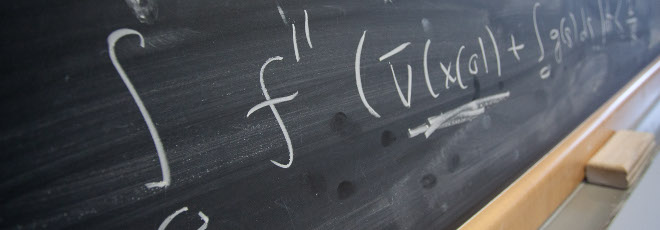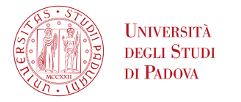
“The challenge of the applicability of KAM theorem: a computer-assisted approach”
Tuesday 20, Thursday 22, Tuesday 27 February 2024 - Chiara Caracciolo (Uppsala University)
3-part seminar series
In KAM theory, constructive techniques are essential in order to produce realistic results in physical problems, since there is usually a big gap between purely analytical results and numerical ones. Computer-assisted approaches are an effective way to make these techniques also rigorous. These seminars will be focused on the rigorous use of the normal form method in nearly-integrable Hamiltonian systems.
Tuesday 20 February 2024, h. 14:00 – Room 2AB40
“Proving the KAM theorem using a normal form approach”
Abstract
This seminar will be dedicated to introducing the problem of the applicability of KAM theorem and the use of normal forms techniques. Specifically, I will focus on an algorithm that brings a Hamiltonian in Kolmogorov normal form and that, consequently, can be used to prove the existence of KAM tori in nearly-integrable Hamiltonian systems.Thursday 22 February 2024, h. 14:30 – Room 1BC45
“Computer-assisted proof of the KAM theorem”
Abstract
In this second seminar, I will discuss the use interval arithmetic in order to make the computations made by a computer rigorous. In particular, I will stress out what do we need in order to make the proof of existence of KAM tori based on the normal form procedure rigorous and effective. I will describe how to check the hypotheses of the theorem, like the Diophantine condition for the frequency vector and the smallness condition on the perturbing parameter, using a set of computer-assisted estimates on the Hamiltonian function.Tuesday 27 February 2024, h. 14:00 – Room 2AB40
“Some applications of a computer-assisted KAM theorem to planetary three-body problems”
Abstract
This last seminar is devoted to showing some example of rigorous application of the KAM theorem to realistic planetary problems. The first results concern a secular three-body problem, with parameters that are compatible with the observations of the Upsilon-Andromedae planetary system. This system is rather peculiar in view of its non-coplanar nature (with mutual inclination of around 30 degrees) and relatively large eccentricities (approximately 0.3). Secondly, I will present ongoing work in the framework of a realistic planar three-body problem. In particular, I will emphasize what is necessary in order to obtain a positive outcome, by providing examples of both successes and failures, depending on different parameters.The results presented in these seminars are based on collaborations with U. Locatelli, M. Sansottera and M. Volpi, supported by the PRIN project “New Frontiers of Celestial Mechanics: theory and Applications”.




